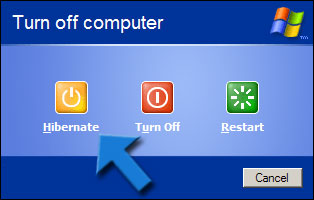A friend recently told me about a problem with her new laptop: Whenever she'd step away from it for more than a few minutes, she'd close the lid. Upon returning, she'd open the lid, only to be faced with a blank screen and no response from the mouse or keyboard.
Want to know why? The default lid-closing action for most laptops is to put the system in Sleep mode, and Windows is notoriously bad at waking up properly. I advise most laptop users to use Hibernate mode instead, as it's much more reliable when it comes to waking up.
You see, Sleep puts your system into a low-power state, allowing you to pick up where you left off after just a few seconds. However, a PC in Sleep mode continues to consume battery power, so it's not uncommon to return to a "sleeping" PC to find that it's just plain dead. Or, in my friend's case, unresponsive.
Hibernate, however, saves your machine's current state to a temporary hard-drive file, then shuts down completely. When you start it up again, it loads that file and returns you to where you left off--no booting required.
Both ends of the Hibernate process take a little longer than sleep mode, but you avoid any of the issues that can arise when Windows suddenly loses power.
And as noted, sleep mode is notoriously flaky. If your system refuses to wake up properly, you'll end up losing whatever documents and/or Web pages you had open. Consequently, I recommend using hibernate most of the time.
skip to main |
skip to sidebar
Computer Troubleshooting and Tips





0 comments:
Post a Comment